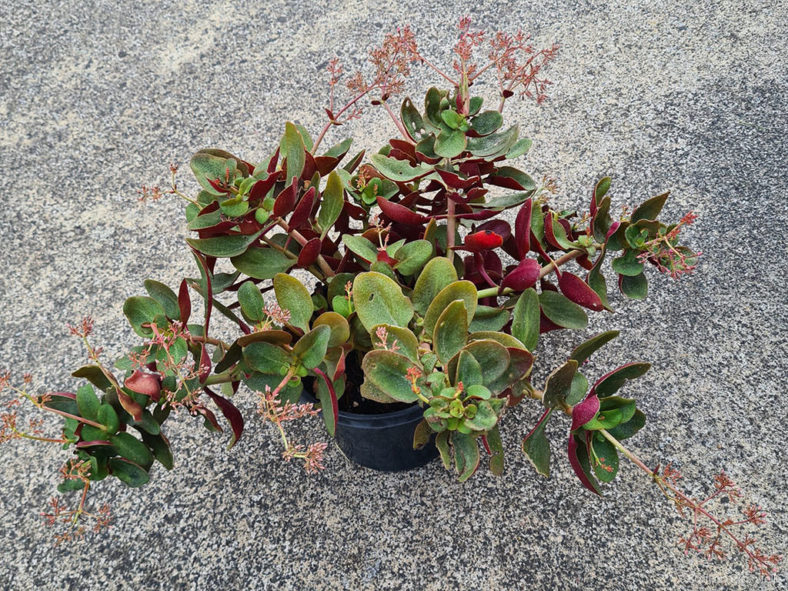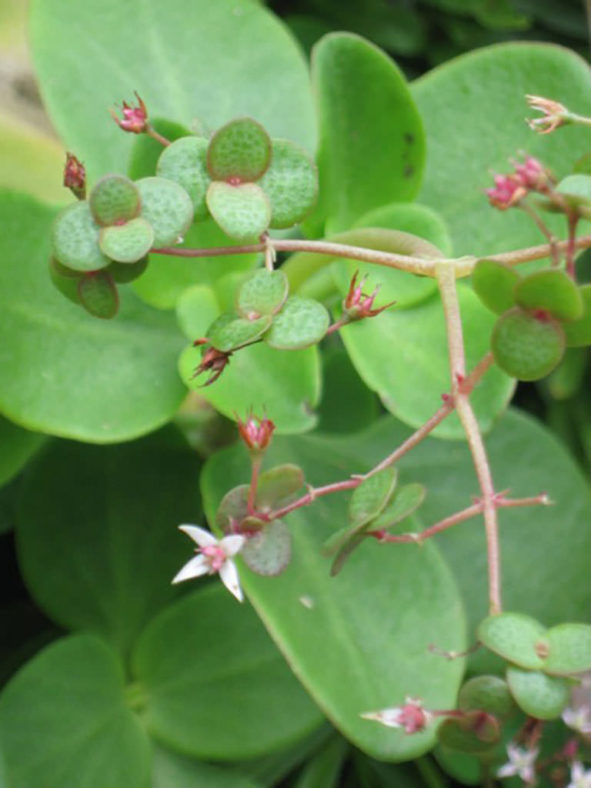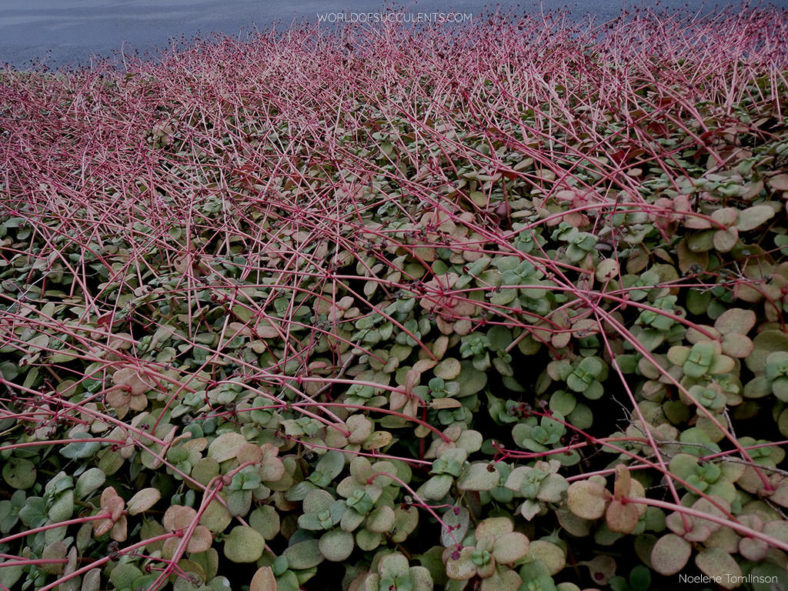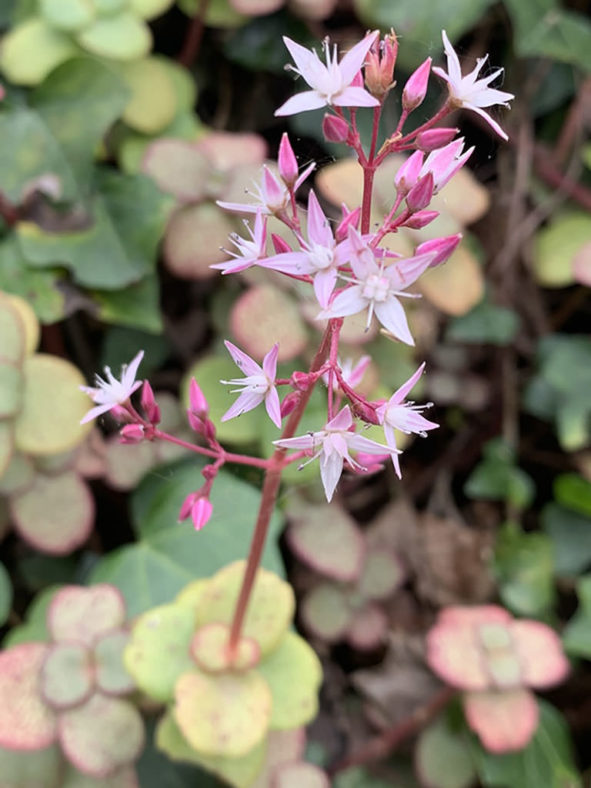Scientific Name
Crassula multicava Lem.
Common Name(s)
Cape Province Pygmyweed, Fairy Crassula, Grandfather's Watch Chain, London Pride, Mosquito Flower, Pitted Crassula
Synonym(s)
Crassula quadrifida, Septimia multicava
Scientific Classification
Family: Crassulaceae
Subfamily: Crassuloideae
Genus: Crassula
Etymology
The specific epithet "multicava" (pronounced "mul-tee-KAH-vuh") means "with many holes" and refers to the many pore-like holes on the leaves, which are called "hydathodes."
The common name "Fairy Crassula" refers to the charming, little, star-shaped flowers that appear in masses above the foliage.
Origin
Crassula multicava is native to South Africa. It occurs from Mpumalanga (Eastern Transvaal) and KwaZulu-Natal (Natal) to Eastern Cape and Southern Cape provinces, growing in forest margins, river and stream banks, and coastal and subtropical thickets.
Description
Crassula multicava is a mat-forming succulent with soft decumbent branches that bear rounded leaves marked with pitted, dark green to red dots on the upper surface. The branches rarely grow longer than 16 inches (40 cm), including the inflorescence. The leaves are green, often with a yellowish-green hue, and rarely have a purplish lower surface. They are elliptic to oblong–obovate with slightly recurved margins, measuring up to 2.6 inches (6.5 cm) in length and 1.6 inches (4 cm) in width. The leaves are attached to the stem by a petiole up to 0.8 inches long.
The inflorescence is a rounded or elongated thyrse with few to many dichasia. The flowers are star-shaped, typically 4-merous, white to cream-colored, and tinged with red towards the apices. They appear from late winter to early spring.

How to Grow and Care for Crassula multicava
Light: C. multicava prefers full sun to partial shade. However, intense afternoon sun in the hottest period of summer can burn the leaves of the plant. Therefore, a place with morning sun and afternoon shade would be perfect. Indoors, place your plant in a window that receives at least 6 hours of direct sunlight.
Soil: This plant is not particular about soil pH but requires very porous soil with excellent drainage. Use commercial potting soil mixes designated for succulents, or mix your own.
Temperature: Like most Crassulas, this succulent can tolerate short-term freezing, but prolonged exposure to extremes of cold or heat will cause it to lose leaves and eventually die. C. multicava can withstand temperatures as low as 25°F (-3.9°C). USDA Plant Hardiness Zones 9b to 11b, 25°F to 50°F (-3.9°C to 10°C).
Watering: Avoid overwatering using the "soak and dry" method, where the soil is soaked with water, slowly drained, and left to dry out before watering again. Reduce watering in winter. Potted plants require more frequent watering than those in the ground.
Fertilizing: C. multicava does not require much feeding but will benefit from a small amount of organic fertilizer in mid-spring, when it begins actively growing.
Repotting: Repot as needed, preferably in spring, at the beginning of the period of active growth. Ensure the soil is dry before beginning the repotting process.
Propagation: This succulent is generally started by cuttings. It can also be grown from seeds. The easiest way is to propagate C. multicava from a single leaf. Using stem cuttings is the fastest way to get a decent-sized plant. These processes are most successful at the beginning of the plant's active growth period. Sow the seeds in the spring or summer. C. multicava also propagates itself by producing plantlets on the flower stems that fall off and grow into independent plants.
Learn more at How to Grow and Care for Crassula.
Toxicity of Crassula multicava
C. multicava is nontoxic to people and pets.
Links
- Back to genus Crassula
- Succupedia: Browse succulents by Scientific Name, Common Name, Genus, Family, USDA Hardiness Zone, Origin, or cacti by Genus
Photo Gallery
Click on a photo to see a larger version.


